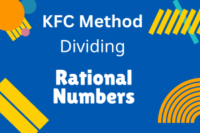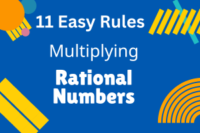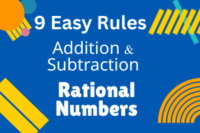Class 10 Physics Chapter 5
Published: 18 Dec 2023
Class 10 Physics Chapter 5 introduces the concept of “Current Electricity”. This is mainly chapter No. 14, “Current Electricity”, of the book of Class 10.
This article consists of Notes, SLO Based Notes and MCQs of Physics, which cover your course, board papers and clear your Physics concept for different types of tests.
Class 10 Physics Chapter 5 Notes
Current Electricity
SLO Base Notes
Class 10 Physics Chapter 5 MCQs
1. The study of charge in motion is called:(a) Electromagnetism
(b) Electrostatics
(c) Current electricity
(d) Quantum mechanics
Show Answer
Current electricity
2. The time at which charge flows through an area is called:
(a) Voltage
(b) Electric current
(c) Capacitance
(d) Resistance
Show Answer
Electric current
3. What is the symbol used to represent electric current?
(a) I
(b) V
(c) R
(d) Q
Show Answer
I
4. Which of the following formulas represents electric current?
(a) $ I = \frac{Q}{t} $
(b) $ V = IR $
(c) $ P = VI $
(d) $ C = \frac{Q}{V} $
Show Answer
$ I = \frac{Q}{t} $
5. The unit of electric current is named after which scientist?
(a) Volt
(b) Ampere
(c) Ohm
(d) Coulomb
Show Answer
Ampere
To Download Complete Notes of Physics Notes 10 Class, Click on the given link.
6. What is the SI unit of electric current?(a) Coulomb
(b) Volt
(c) Ampere
(d) Ohm
Show Answer
Ampere
7. One Ampere is equal to:
(a) $ 1 \ C/s $
(b) $ 1 \ V/s $
(c) $ 1 \ \Omega /s $
(d) $ 1 \ W/s $
Show Answer
1 C/s
8. What is the direction of conventional current flow?
(a) From negative to positive
(b) From positive to negative
(c) It varies with the material
(d) It doesn’t have a fixed direction
Show Answer
From positive to negative
9. Which term is used for the actual direction of charge carriers in conductors like metals?
(a) Conventional current flow
(b) Proton flow
(c) Electron flow
(d) Neutron flow
Show Answer
Electron flow
10. In real-life situations, small values of current are often measured in:
(a) Kilo ohms
(b) Milliamperes $ (mA) $
(c) Megawatts
(d) Microvolt $ (\mu V) $
Show Answer
Milliamperes $ (mA) $
11. Which particle is the primary charge carrier in metals when it comes to electric current?
(a) Protons
(b) Neutrons
(c) Electrons
(d) Positrons
Show Answer
Electrons
12. If a charge of 8 Coulombs flows through a conductor in 2 seconds, what is the current?
(a) 3 A
(b) 12 A
(c) 1.5 A
(d) 4 A
Show Answer
4 A
13. A circuit allows a current of 0.5 A to flow and 10 Coulombs of charge pass through it. How long did this take?
(a) 2 s
(b) 20 s
(c) 5 s
(d) 50 s
Show Answer
20 s
14. If the current in a wire is 2 A and it flows for 10 seconds, how much charge has passed through the wire?
(a) 5 C
(b) 12 C
(c) 20 C
(d) 2 C
Show Answer
20 C
15. The difference of electric potential between two points is called:
(a) Potential difference
(b) Current
(c) Resistance
(d) Charge
Show Answer
Potential difference
16. What unit is used to measure potential difference?
(a) Ampere
(b) Ohm
(c) Joule
(d) Volt
Show Answer
Volt
17. The potential difference developed and maintained by a source of electrical energy is known as:
(a) Voltage
(b) Current
(c) Electromotive force (emf)
(d) Resistance
Show Answer
Electromotive force (emf)
18. The energy spent per unit positive charge by the source to move it from the negative terminal to the positive terminal within the source is called:
(a) Potential difference
(b) Electromagnetic radiation
(c) Voltage
(d) Electromotive force (emf)
Show Answer
Electromotive force (emf)
19. What is the SI unit of electromotive force (emf)?
(a) Ohm
(b) Coulomb
(c) Joule
(d) Volt
Show Answer
Volt
20. Which of the following formulas represents electromotive force (emf)?
(a) $ E = \frac{I}{R} $
(b) $ E = \frac{Q}{t} $
(c) $ E = \frac{W}{q} $
(d) $ E = \frac{V}{I} $
Show Answer
$ E = \frac{W}{q} $
21. “The current in a conductor is directly proportional to the applied voltage across the conductor as long as temperature and the physical state of the conductor is kept constant” describes:
(a) Ohm’s Law
(b) Newton’s Law
(c) Faraday’s Law
(d) Coulomb’s Law
Show Answer
Ohm’s Law
22. According to Ohm’s Law, what is the relationship between voltage (V), current (I), and resistance (R)?
(a) $ I = VR $
(b) $ V = IR $
(c) $ R = IV $
(d) $ V = \frac{I}{R} $
Show Answer
$ V = IR $
23. Ohm’s Law is most applicable to which type of materials?
(a) Metals
(b) Gases
(c) Liquids
(d) Insulators
Show Answer
Metals
24. According to Ohm’s Law, if you double the voltage applied to an ohmic device, what happens to the current?
(a) It decreases
(b) It remains the same
(c) It doubles
(d) It becomes zero
Show Answer
It doubles
25. If the resistance of a conductor is doubled while the voltage remains constant, what happens to the current?
(a) It doubles
(b) It halves
(c) It remains the same
(d) It depends on the material
Show Answer
It halves
26. If the current in a circuit is 3 amperes (A) and the resistance is 5 ohms $ (\mu) $, what is the voltage across the circuit?
(a) 8 V
(b) 15 V
(c) 0.6 V
(d) 2.5 V
Show Answer
15 V
27. A resistor has a voltage of 12 volts (V) applied to it, and it allows a current of 4 amperes (A) to flow. What is the resistance of the resistor?
(a) $ 3 \ \mu $
(b) $ 48 \ \mu $
(c) $ 16 \ \mu $
(d) $ 8 \ \mu $
Show Answer
$ 3 \ \mu $
28. A resistor with a voltage of 15 volts (V) applied across it has a resistance of 3 ohms $ (\mu) $. What is the current flowing through this resistor?
(a) 5 A
(b) 18 A
(c) 12 A
(d) 45 A
Show Answer
5 A
29. What are devices that follow Ohm’s Law and exhibit a direct relationship between current and voltage called?
(a) Non-Ohmic devices
(b) Ohmic devices
(c) Electronic devices
(d) None of these
Show Answer
Ohmic devices
30. The opposition offered to the flow of charges is called:
(a) Voltage
(b) Current
(c) Resistance
(d) Conductance
Show Answer
Resistance
31. What is electrical resistance in a conductor primarily caused by in metallic conductors?
(a) Voltage
(b) Collisions between free electrons and fixed atoms
(c) Current
(d) Magnetic fields
Show Answer
Collisions between free electrons and fixed atoms
32. According to Ohm’s law, how is resistance (R) mathematically related to voltage (V) and current (I)?
(a) $ R = \frac{V}{I} $
(b) $ V = Rt $
(c) $ I = VR $
(d) $ R = IV $
Show Answer
$ R = \frac{V}{I} $
33. What is the SI unit of electrical resistance?
(a) Volt
(b) Ampere
(c) Ohm $ (\mu) $
(d) Coulomb
Show Answer
Ohm $ (\mu) $
34. One ohm is equal to:
(a) $ 1 \frac{A}{V} $
(b) $ 1 \frac{C}{V} $
(c) $ 1 \frac{J}{A} $
(d) $ 1 \frac{V}{A} $
Show Answer
$ 1 \frac{V}{A} $
35. What is a wire or an electrical device that offers resistance to the flow of charges called?
(a) Conductor
(b) Insulator
(c) Resistor
(d) Capacitor
Show Answer
Resistor
36. In circuit diagrams, what is the commonly used symbol to represent a resistor?
(a) A zigzag line
(b) A straight line
(c) A circle
(d) An arrow
Show Answer
A zigzag line
37. Which of the following factors affects the resistance of a metallic conductor by increasing it?
(a) Length
(b) Cross-sectional area
(c) Temperature
(d) All of these
Show Answer
All of these
38. When the length of a metallic conductor is increased, what happens to its resistance?
(a) It decreases
(b) It remains the same
(c) It increases
(d) None of these
Show Answer
It increases
39. If the cross-sectional area of a metallic conductor is decreased, what effect does it have on its resistance?
(a) Resistance decreases
(b) Resistance remains constant
(c) Resistance increases
(d) None of these
Show Answer
Resistance increases
40. Which of the following materials has low resistance:
(a) Copper
(b) Aluminum
(c) Iron
(d) Insulating rubber
Show Answer
Copper
41. Which material is commonly used to make resistors?
(a) Copper
(b) Carbon
(c) Aluminum
(d) Silver
Show Answer
Carbon
42. Variable resistors are often used in electronics for what purpose?
(a) To act as insulators
(b) As capacitors
(c) As volume and other controls
(d) To enhance conductivity
Show Answer
As volume and other controls
43. When resistors are connected in series, what happens to their total resistance?
(a) It increases
(b) It decreases
(c) It remains the same
(d) None of these
Show Answer
It increases
44. In a series combination of resistors, the equivalent resistance is calculated using which formula?
(a) $ R_e = R_1 + R_2 + R_3 $
(b) $ \frac{1}{R_e} = \frac{1}{R_1} + \frac{1}{R_2} + \frac{1}{R_3} $
(c) $ R_e = R_1 \times R_2 \times R_3 $
(d) $ R_e = R_1 – R_2 – R_3 $
Show Answer
$ R_e = R_1 + R_2 + R_3 $
45. In a series combination of resistors, what quantity stays the same across each resistor?
(a) Voltage
(b) Current
(c) Energy
(d) Resistance
Show Answer
Current
46. What quantity is distributed across each resistor connected in series?
(a) Voltage
(b) Current
(c) Energy
(d) Resistance
Show Answer
Voltage
47. Two resistors, $ R_1 \ and \ R_2 $, are connected in series. If $ R_1 = 20 \ ohms \ and \ R_2 = 30 \ ohms $, what is the value of the total resistance (R) in the series combination?
(a) 50 ohms
(b) 10 ohms
(c) 15 ohms
(d) 200 ohms
Show Answer
50 ohms
48. You have three resistors in series, $ R_1 = 5 \ ohms, \ R_2 = 10 \ ohms \ and \ R_3 = 15 \ ohms $. What is the total resistance (R) of this series combination?
(a) 30 ohms
(b) 5 ohms
(c) 20 ohms
(d) 150 ohms
Show Answer
30 ohms
49. Two resistors, $ R_1 \ and \ R_2 $, are connected in series. If the total resistance (R) is 24 ohms and $ R_2 = 8 \ ohms $, what is the value of $ R_1 $?
(a) 32 ohms
(b) 16 ohms
(c) 12 ohms
(d) 4 ohms
Show Answer
16 ohms
50. When resistors are connected in parallel, what happens to their total resistance?
(a) It increases
(b) It remains the same
(c) It decreases
(d) None of these
Show Answer
It decreases
51. In a parallel combination of resistors, the equivalent resistance is calculated using which formula?
(a) $ R_e = R_1 + R_2 + R_3 $
(b) $ \frac{1}{R_e} = \frac{1}{R_1} + \frac{1}{R_2} + \frac{1}{R_3} $
(c) $ R_e = R_1 \times R_2 \times R_3 $
(d) $ R_e = R_1 – R_2 – R_3 $
Show Answer
$ \frac{1}{R_e} = \frac{1}{R_1} + \frac{1}{R_2} + \frac{1}{R_3} $
52. In a parallel combination of resistors, what quantity stays the same across each resistor?
(a) Voltage
(b) Current
(c) Energy
(d) Resistance
Show Answer
Voltage
53. What quantity is distributed across each resistor connected in parallel?
(a) Voltage
(b) Current
(c) Energy
(d) Resistance
Show Answer
Current
54. Two resistors, $ R_1 \ and \ R_2 $, are connected in parallel. If $ R_1 = 20 \ ohms \ and \ R_2 = 30 \ ohms $, what is the value of the total resistance (R) in the parallel combination?
(a) 12 ohms
(b) 15 ohms
(c) 10 ohms
(d) 50 ohms
Show Answer
12 ohms
55. You have three resistors in parallel, $ R_1 = 5 \ ohms, \ R_2 = 10 \ ohms \ and \ R_3 = 15 \ ohms $. What is the total resistance (R) of this parallel combination?
(a) 2.5 ohms
(b) 5 ohms
(c) 2.73 ohms
(d) 30 ohms
Show Answer
2.73 ohms
56. Two resistors, $ R_1 \ and \ R_2 $, are connected in parallel. If the total resistance (R) is 4 ohms and $ R_2 = 12 \ ohms $, what is the value of $ R_1 $?
(a) 6 ohms
(b) 8 ohms
(c) 16 ohms
(d) 48 ohms
Show Answer
6 ohms
57. What are conductors for which Ohm’s law holds called?
(a) Ohmic conductors
(b) Non-ohmic conductors
(c) Superconductors
(d) Semiconductors
Show Answer
Ohmic conductors
58. In an $ I-V $ graph, what kind of relationship is observed for Ohmic conductors?
(a) Linear (straight line)
(b) Exponential
(c) Parabolic
(d) No relationship
Show Answer
Linear (straight line)
59. What is the unit of electrical energy?
(a) Joules (J)
(b) Volts (V)
(c) Amperes (A)
(d) Watts (W)
Show Answer
Joules (J)
60. Which formula is used to calculate electrical energy (E) when you know the charge (Q) and potential difference (V)?
(a) $ E = ItV $
(b) $ E = I^2Rt $
(c) $ E = \frac{V^2t}{R} $
(d) $ E = QV $
Show Answer
$ E = QV $
61. If a charge of 20 C flows through a circuit with a potential difference of 10 V, what is the electrical energy consumed or delivered?
(a) 30 J
(b) 200 J
(c) 2 J
(d) 2000 J
Show Answer
200 J
62. When a current of 5 A flows through a resistor with a resistance of 2 ohms for 10 seconds, how much electrical energy is dissipated as heat?
(a) 10 J
(b) 100 J
(c) 500 J
(d) 20 J
Show Answer
500 J
63. If the potential difference across a circuit is 5 V, and the resistance is 2 ohms, and it operates for 4 seconds, how much electrical energy is used?
(a) 30 J
(b) 20 J
(c) 50 J
(d) 60 J
Show Answer
50 J
64. According to Joule’s law of heating, the amount of heat generated in a resistor is proportional to which factors?
(a) $ I^2Rt $
(b) $ V^2Rt $
(c) $ \frac{I}{V} $
(d) $ IRT $
Show Answer
$ I^2Rt $
65. In Joule’s law of heating, what quantity is squared to determine the heat generated in a resistor?
(a) Voltage (V)
(b) Current (I)
(c) Resistance (R)
(d) Time (t)
Show Answer
Current (I)
66. The electrical energy lost in a device due to potential difference across it can be represented as an equation called:
(a) Ohm’s law
(b) Watt’s formula
(c) Newton’s law
(d) Joule’s law
Show Answer
Joule’s law
67. When current flows through a resistor for a longer duration of time, what happens to the heat generated, as per Joule’s law?
(a) It decreases
(b) It remains constant
(c) It increases
(d) It becomes zero
Show Answer
It increases
68. The time rate at which work is done in an electric circuit is called:
(a) Electrical charge
(b) Electric potential
(c) Electric resistance
(d) Electric power
Show Answer
Electric power
69. How electric power (P) is mathematically expressed in terms of work (W) and time (t)?
(a) $ P = \frac{W}{t} $
(b) $ P = W + t $
(c) $ P = W \times t $
(d) $ P = W – t $
Show Answer
$ P = \frac{W}{t} $
70. A device consumes 6000 Joules of energy in 10 seconds. What is the power of the device?
(a) 60 Watts
(b) 600 Watts
(c) 6,000 Watts
(d) 6 Watts
Show Answer
600 Watts
71. In a circuit, the current is 2 amperes (A), and the voltage is 12 volts (V). What is the power of the circuit?
(a) 6 Watts
(b) 24 Watts
(c) 14 Watts
(d) 2 Watts
Show Answer
24 Watts
72. A resistor with a resistance of 8 ohms $ (\Omega) $ has a current of 2 amperes (A) passing through it. What is the power dissipated in the resistor?
(a) 16 Watts
(b) 2 Watts
(c) 32 Watts
(d) 12 Watts
Show Answer
32 Watts
73. If a circuit has a voltage of 20 volts (V) and a resistance of 5 ohms (Ω), what is the power dissipated in the circuit?
(a) 100 Watts
(b) 5 Watts
(c) 80 Watts
(d) 25 Watts
Show Answer
80 Watts
74. What is the SI unit for electrical power?
(a) Volt (V)
(b) Ampere (A)
(c) Joule (J)
(d) Watt (W)
Show Answer
Watt (W)
75. What is the preferred unit for measuring electrical energy consumed in most homes and businesses, as opposed to the small unit of the joule?
(a) Kilowatt-hour (kWh)
(b) Megawatt (MW)
(c) Gigawatt-hour (GWh)
(d) Watt-second (Ws)
Show Answer
Kilowatt-hour (kWh)
76. If a device with a power rating of 500 watts (0.5 kW) runs continuously for 4 hours, how much energy does it consume in kilowatt-hours?
(a) 200 kWh
(b) 2 kWh
(c) 0.02 kWh
(d) 20 kWh
Show Answer
2 kWh
77. The cost of electricity is often determined based on the consumption of:
(a) Joules (J)
(b) Volts (V)
(c) Kilowatts (kW)
(d) Kilowatt-hours (kWh)
Show Answer
Kilowatt-hours (kWh)
78. 1 kWh is equal to:
(a) 1000 watts
(b) 1 joule
(c) 3600 seconds
(d) 3.6 × 106 joules
Show Answer
3.6 × 106 joules
79. The formula for calculating the cost (Cost) of electrical energy consumption is:
(a) $ Cost = E – Tariff \ Rate $
(b) $ Cost = E \times Tariff \ Rate $
(c) $ Cost = \frac{E}{Tariff \ Rate} $
(d) $ Cost = E + Tariff \ Rate $
Show Answer
$ Cost = E \times Tariff \ Rate $
80. If you consumed 400 kWh of electrical energy and the tariff rate is 15 PKR per kWh, what is the total cost of your electricity bill in PKR?
(a) 30 PKR
(b) 50 PKR
(c) 60 PKR
(d) 6,000 PKR
Show Answer
6,000 PKR
81. Which component is used as a safety device that blows or melts if the current through it exceeds a specified value?
(a) Capacitor
(b) Resistor
(c) Power Supply
(d) Fuse
Show Answer
Fuse
82. A device that allows or blocks the flow of current:
(a) Resistor
(b) Capacitor
(c) Switch
(d) Lamp
Show Answer
Switch
83. A device that is used to detect very small currents and voltages:
(a) Galvanometer
(b) Ammeter
(c) Voltmeter
(d) Oscilloscope
Show Answer
Galvanometer
84. Which instrument is used for measuring current in a circuit?
(a) Galvanometer
(b) Voltage meter
(c) Ammeter
(d) Resistance meter
Show Answer
Ammeter
85. In what manner should an Ammeter be connected in a circuit for measuring current?
(a) In parallel
(b) In series
(c) In a closed loop
(d) None of these
Show Answer
In series
86. The resistance of an ammeter is kept:
(a) High
(b) Low
(c) Variable
(d) None of these
Show Answer
Low
87. Which instrument is used for measuring potential difference in a circuit?
(a) Galvanometer
(b) Ammeter
(c) Voltmeter
(d) Resistance meter
Show Answer
Voltmeter
88. How should a voltmeter be connected in a circuit to measure potential difference?
(a) In parallel
(b) In series
(c) In a closed loop
(d) None of these
Show Answer
In parallel
89. The resistance of a voltmeter is typically kept:
(a) High
(b) Low
(c) Variable
(d) None of these
Show Answer
High
90. What is the primary purpose of a digital multi-meter (DMM) in electrical measurements?
(a) To measure current
(b) To measure potential difference
(c) To function as both an ammeter and a voltmeter
(d) None of these
Show Answer
To function as both an ammeter and a voltmeter
91. The type of current in which electric charge flows in one direction continuously without reversal is:
(a) Direct current (DC)
(b) Variable current
(c) Oscillating current (OC
(d) Alternating current (AC)
Show Answer
Direct current (DC)
92. A type of electric current in which the direction of the flow of electric charge periodically reverses is:
(a) Direct current (DC)
(b) Variable current
(c) Oscillating current (OC)
(d) Alternating current (AC)
Show Answer
Alternating current (AC)
93. Which of the following can produce both DC and AC?
(a) Electric generators
(b) Ammeters
(c) Resistors
(d) Capacitors
Show Answer
Electric generators
94. What can a multi-meter measure?
(a) Only DC
(b) Only AC
(c) Both DC and AC
(d) Neither DC nor AC
Show Answer
Both DC and AC
95. In typical house circuits, what are the two wires in the supply cable known as?
(a) Positive and negative
(b) Live and neutral
(c) Series and parallel
(d) Red and black
Show Answer
Live and neutral
96. What type of current is the supply to homes in most cases?
(a) Direct current (DC)
(b) Alternating current (AC)
(c) Static electricity
(d) Batteries
Show Answer
Alternating current (AC)
97. In house circuits, where are switches and fuses typically installed?
(a) Only on the neutral wire
(b) On the ground wire
(c) Only on the live wire
(d) On both live and neutral wires
Show Answer
Only on the live wire
98. Which safety devices are typically used to prevent excessive current flow and protect household appliances?
(a) Circuit breakers
(b) Extension cords
(c) Power strips
(d) Light bulbs
Show Answer
Circuit breakers
99. In modern consumer units, what is used instead of fuses for electrical protection?
(a) Light switches
(b) Circuit breakers
(c) Extension cords
(d) Power strips
Show Answer
Circuit breakers
100. What is the typical resistance of dry skin?
(a) About 1000 ohms
(b) About 240 ohms
(c) About 10,000 ohms
(d) About 24 ohms
Show Answer
About 10,000 ohms
101. How much current can cause death in some cases?
(a) 1 mA
(b) 10 mA
(c) 100 mA
(d) 1.5 mA
Show Answer
100 mA
Class 10 Physics MCQs (All Chapters)

- Be Respectful
- Stay Relevant
- Stay Positive
- True Feedback
- Encourage Discussion
- Avoid Spamming
- No Fake News
- Don't Copy-Paste
- No Personal Attacks



- Be Respectful
- Stay Relevant
- Stay Positive
- True Feedback
- Encourage Discussion
- Avoid Spamming
- No Fake News
- Don't Copy-Paste
- No Personal Attacks





